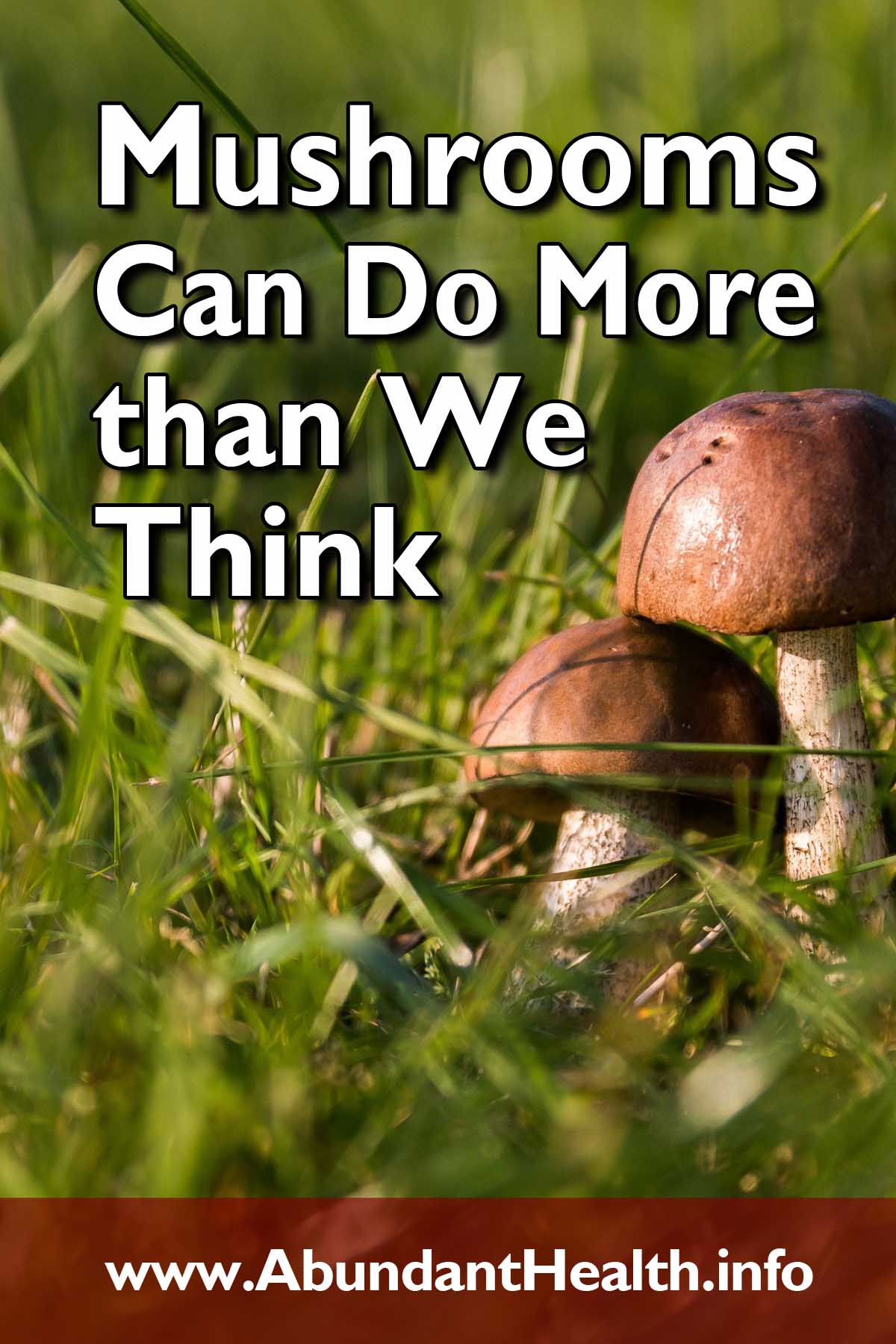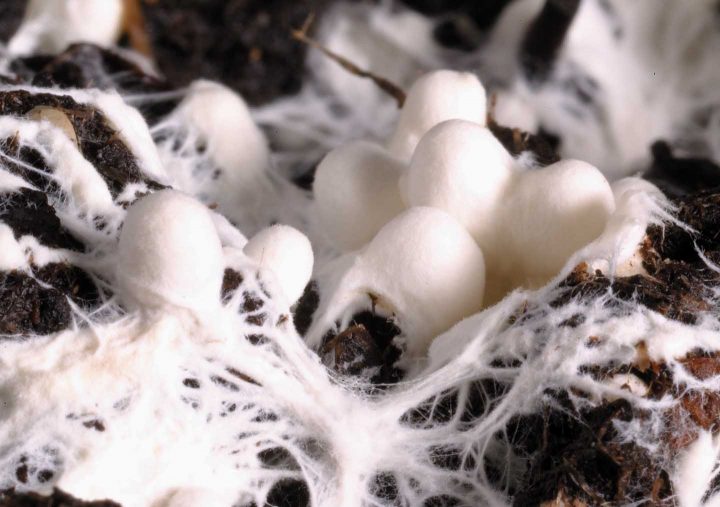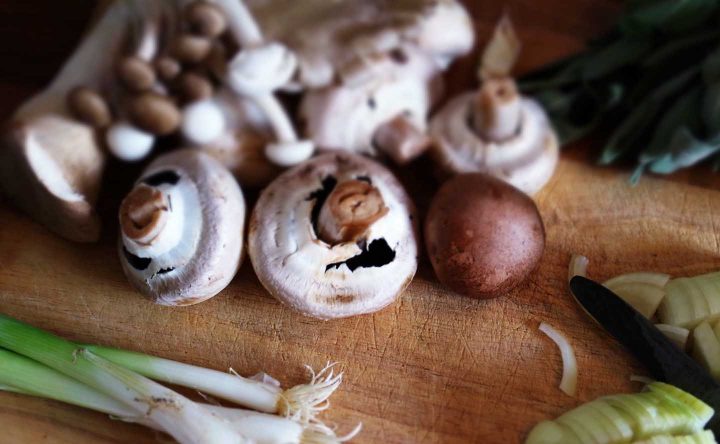I can hardly believe my eyes. Is there such a thing as mushrooms that grow through snow and ice? I came across them while walking through my garden. On a tree stump that barely protrudes from the ground, they grow in a nicely formed cluster. The ocher yellow hats and velvet brown stems stand out clearly against the snow.

My mushroom book confirms it: The velvet-foot, Flammulina velutipes, grows from autumn to spring on dead deciduous trees. A search on the Internet and browsing through textbooks reveal even more amazing things about mushrooms.
Fungi form a kingdom of their own. They are neither plant nor animal. They include single-celled organisms such as baker’s yeast and multicellular organisms such as mold and edible mushrooms. In the past, they were counted among the plants. But their metabolism is closer to that of animals, which they aren’t either, because they can’t move. So they put them into their own group without further ado.
They could belong to the animals because they build up their carbohydrate stores like animals as glycogen and not like plants as starch. However, they distinguish themselves from animals because their cell walls and vacuoles are more like plants. But the plants, in turn, possess chlorophyll. This allows them to carry out photosynthesis, which mushrooms are lacking. So they are best accommodated in their own group.
In the Realm of Fungi
About 140,000 species make up the realm of fungi. The edible mushrooms known to us make up only a tiny fraction of fungi. In the past, the genera Penicillium, from which penicillin comes from, the Aspergillus species, being the causative agent of a lung disease, and the Saccharomyces, to which baker’s yeast belongs, have been very well studied. Edible mushrooms have only had a tradition as medicinal mushrooms in Asia. But the interest in edible mushrooms and their medically active ingredients is growing around the world.
The mushroom as a fruiting body, i.e. what we call an edible mushroom, only grows when a female and a male gamete cell fuse together. Otherwise, fungi multiply asexually via spores or by dividing hyphae. There must also be enough moisture and there must be enough food for the mycelium, the actual, usually invisible mushroom body that is forming underground. With those correct conditions the long, microscopically thin cell threads, which are called hyphae, can compact, grow out of the soil or wood and create the typical fruiting body. Appearance and characteristics are crucial for a safe determination of the species. One observes the shape and color of the hat, the type of slats, pores or tubes, the stem, the environment in which the mushroom grows, the smell and much more.

Edible Mushrooms
Our edible mushrooms grow either as symbionts with the roots of certain trees (porcini mushroom, chanterelles, truffles) or as saprophytes on wood or foliage (mushrooms, oyster mushrooms, shiitake). Saprophytic mushrooms are very easy to cultivate and are therefore important edible mushrooms for the market.
Composition and Nutrients
Like our various vegetables, the fruiting body of the mushrooms consists to a large extent of water. Also, the nutritional value is about the same. The protein content can be compared to that of legumes. The fat content is negligible. The high fiber content stimulates the bowel movement and increases the volume of the stool. It is precisely this fiber that is of great medical interest. They consist of soluble and insoluble components. The soluble ones have the same effect as the pectin from fruits. They form a gel-like substance in which some insoluble components are stored. In addition to stimulating intestinal activity, they can also lower cholesterol and blood sugar levels. They have an antiviral and antibacterial effect, thus fighting pathogens such as viruses and bacteria.
Be Healthy with Mushrooms
Ergosterol, a typical fungal sterol with a similar structure to our cholesterol, offers protection against colon cancer and can lower the cholesterol level. Mushrooms contain vitamin D and vitamin B12, two vitamins that are otherwise only found in animal foods. Vitamin D is particularly found in porcini mushrooms and morels, and B12 in champignon and some other species, although quantities are too low to meet your daily requirements. Mushrooms are also considered good sources of potassium, iron, phosphorus, manganese, copper and tin. In some mushrooms (oyster mushrooms, shiitake mushrooms) phenols have also been found that can scavenge free radicals. Mushrooms are therefore highly recommended foods that can be combined well with vegetables, cereals, rice or potatoes.

Mushroom Intolerance
Mushrooms should not be eaten raw. They may contain hemolytic substances. These destroy red blood cells. However, they are eliminated by cooking. The digestibility of the mushrooms also increases by boiling them. However, some persons have congenital fungal intolerances. A rather rare type of sugar, trehalose, is found in many mushrooms. Some people do not have the appropriate enzyme to break down trehalose. They get diarrhea and stomach pain after eating mushroom dishes, even if they are not toxic.
Polysaccharides in Fungi
Fungi have cell walls made of polysaccharides, mostly made up of glucose chains. Pullulan is one representative, which is obtained on an industrial scale and used as a starch substitute. It is often added to energy-reduced foods, as it cannot be broken down by amylases, and therefore not being absorbed by the body. It can also be pressed into transparent foils, being used as a biodegradable packaging material. It is also used in oral care products, pharmaceuticals, photography, lithography and electronics.
Therapeutic Ingredients
Other polysaccharides such as Lentinan or Krestin are used in Japan and China in tumor therapy in combination with chemotherapy and radiation therapy. The mechanism of action is still being researched. We know that those substances have immune stimulating properties, which may contribute to their beneficial effect in cancer treatment.
In East Asia and the USA, mushroom extracts are advertised as “immunoceuticals”, orally available substances that benefit the immune system. However, most of the current research is done for cancer treatments, and knowledge for other immune stimulating applications is still rudimentary and safe doses of concentrated extracts are not clearly established. It is foreseeable that those products will reach popularity around the world, being sold in capsule form, often for exorbitant prices. Those who benefit the most will be probably the ones selling those lucrative products.

Although specific species will have specific properties, I can still get a significant benefit by drying my porcini mushrooms collected in the woods, chopping them up in a kitchen grinder and using the powder to thicken soups and sauces. Often this mushroom powder can substitute a high-fat roux, which is popular in French Cuisine as a thickening agent. In addition, we should not underestimate the therapeutic value of our mushrooms. Take the time and make a search in your forest for some delicious mushrooms!

Stay Always Up to Date
Sign up to our newsletter and stay always informed with news and tips around your health.

Esther Neumann studied Nutrition at the University of Vienna. Since then she served as an author for the health magazine “Leben und Gesundheit” and conducted health lectures in various locations of Austria.
Leave a Reply